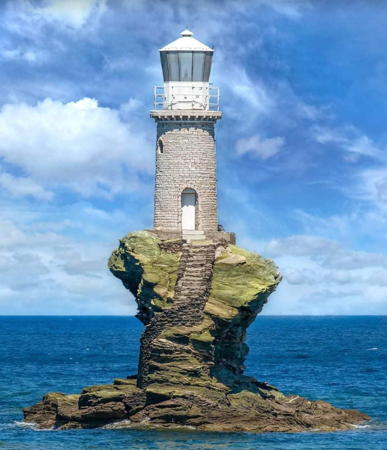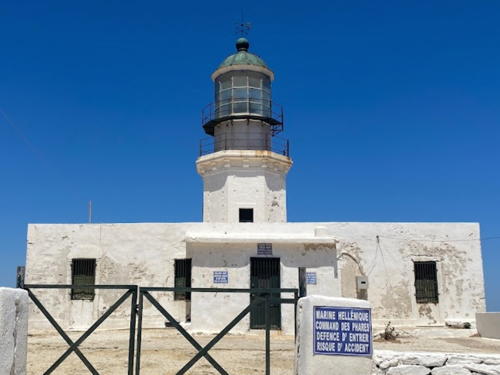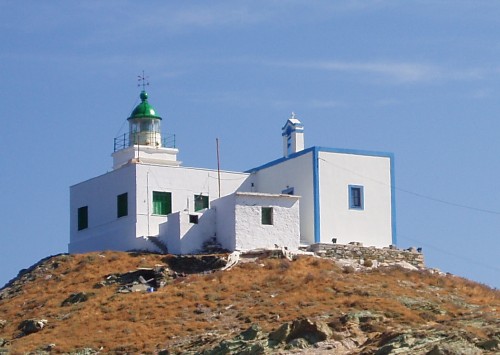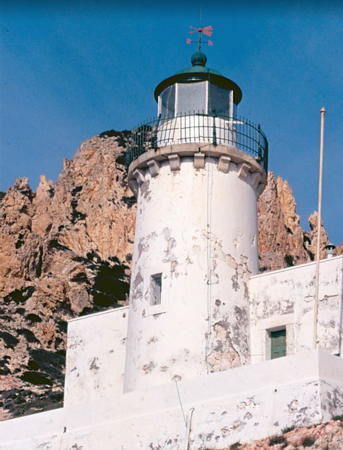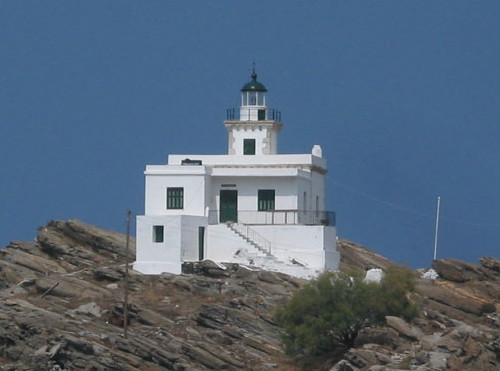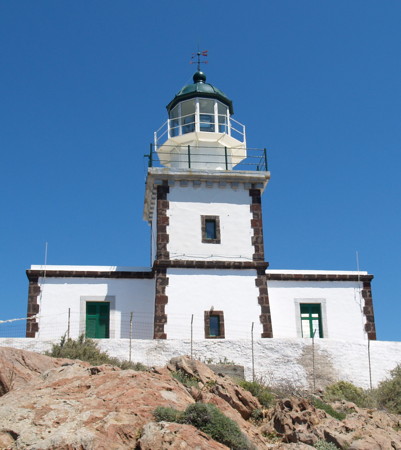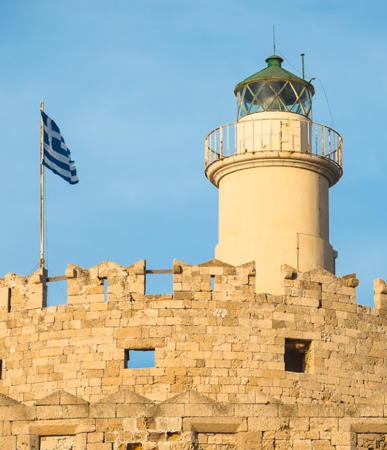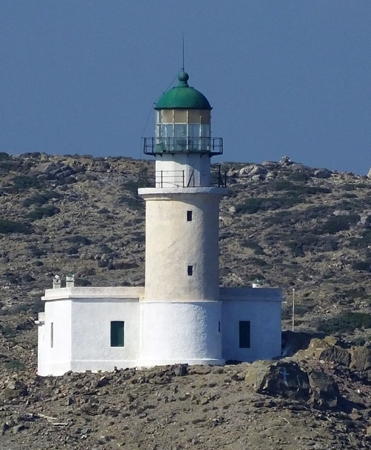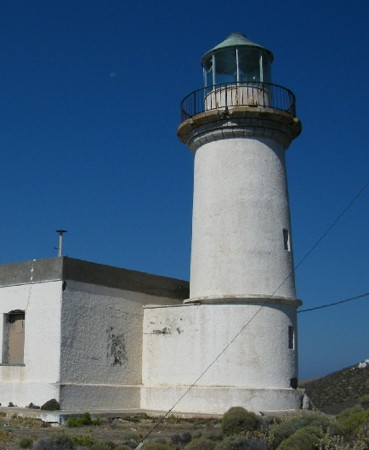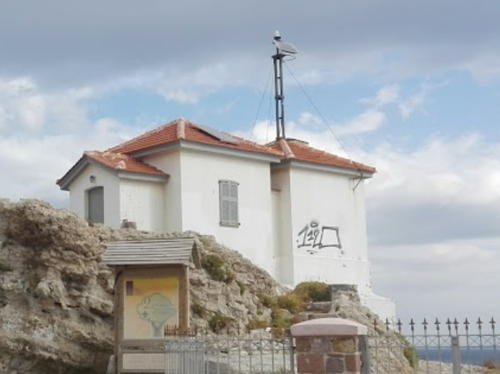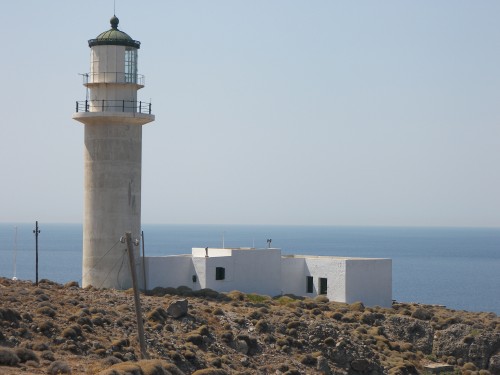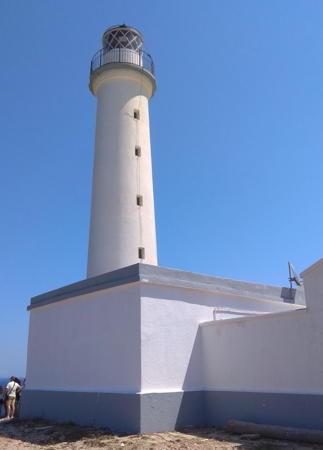The nation of Greece occupies a complex peninsula at the southeastern corner of Europe plus a large number of islands in the Aegean Sea to the east and the Ionian Sea to the west. The name Greece is of Roman origin (Graecia in Latin); the historic name of the country is Hellas (Ἑλλάς) and its official name is the Hellenic Republic (Ελληνική Δημοκρατία, Ellinikí Demokratía).
The modern Greek nation is a relatively recent creation. After several centuries of rule by the Ottoman (Turkish) Empire, southern Greece won its independence in a bitter struggle during the 1820s. The new Greek nation controlled the Cyclades but none of the other islands of the Aegean. They were added at various times as indicated in the notes below for the different island groups.
This page covers lighthouses of the many Greek islands of the central and eastern Aegean Sea. These islands fall into three broad groups. First, the Cyclades include a large number of smaller islands southeast of Athens and north of Crete. Second, the Dodecanese Islands include the large island of Rhodes and many smaller islands of the southeastern Aegean. Finally there are the larger islands lying off the Turkish coast in the northeastern Aegean, including Lesbos, Chios, and Samos.
Greece is divided into thirteen administrative regions called periferies (περιφέρειες). The Cyclades and Dodecanese comprise the South Aegean Region; Lemnos, Lesbos, Chios, Samos, and Ikaria form the North Aegean Region. The periferies are subdivided into districts called regional units (enótites, ενότητες).
Crete has a separate page. The Sporades, islands located in the northwestern corner of the Aegean, are a regional unit of the Thessaly Region and are included on the Northern Greece page. Euboea, a large island very close to the mainland, is a district of the Central Greece Region and is also included on the Northern Greece page. Kithera and Antikithera, located at the southwestern entrance to the Aegean, are a municipality of the Attica Region and are included on the Southern Greece page.
The Greek word for a lighthouse, pháros or fáros (φάρος), is the root for the words for lighthouse in many Western European languages. In Greek nisi is an island, ýfalos is a shoal or reef, akrotíri or ákra is a cape or headland, kolpós is a bay or gulf, ekvolí is an estuary, potámi is a river, and limáni is a port or harbor. In Greek the Aegean Sea is Aigaío Pélagos (Αιγαίο Πέλαγος).
Lighthouses in Greece are maintained by the Hellenic Navy Lighthouse Service.
ARLHS numbers are from the ARLHS World List of Lights. Admiralty numbers are from volume N of the Admiralty List of Lights & Fog Signals. U.S. NGA List numbers are from Publication 113.
- General Sources
- Lighthouses of Greece
- A comprehensive site posted by amateur radio operator Pavlidis Savas (SV2AEL); it includes data and photos for 120 traditional Greek lighthouses.
- Lighthouse Service - Photographs
- A large collection of unlabeled (!) photos of lighthouses.
- Online List of Lights - Greece
- Photos by various photographers posted by Alexander Trabas.
- Greece Lighthouses
- Aerial photos posted by Marinas.com.
- Lighthouses in Greece
- Photos by various photographers available from Wikimedia.
- World of Lighthouses - Greece
- Photos by various photographers available from Lightphotos.net.
- Leuchttürme an der griechischen Küste
- Photos by various photographers posted by Bernd Claußen.
- Weitere Europäische Leuchttürme auf historischen Postkarten
- Historic postcard images posted by Klaus Huelse.
- Navionics Charts
- Navigational chart information for the Aegean.

Spathi Light, Sérifos, May 2008
ex-Flickr Creative Commons photo
by Dimitris Tsapelas
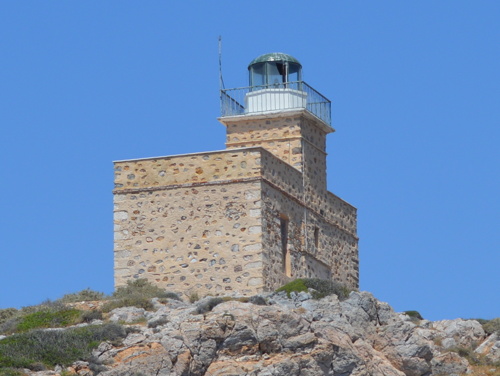
Íos Light, Íos, May 2014
ex-Panoramio Creative Commons photo by apodrasi
